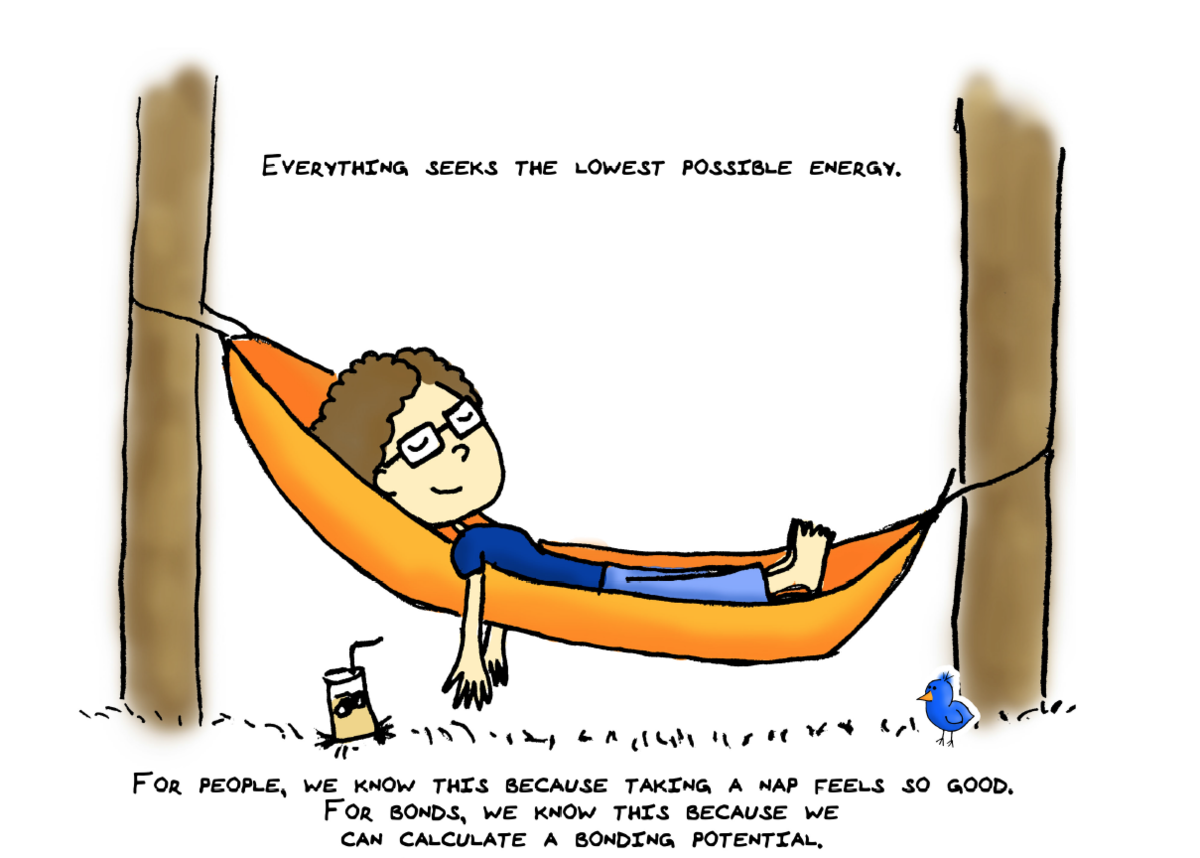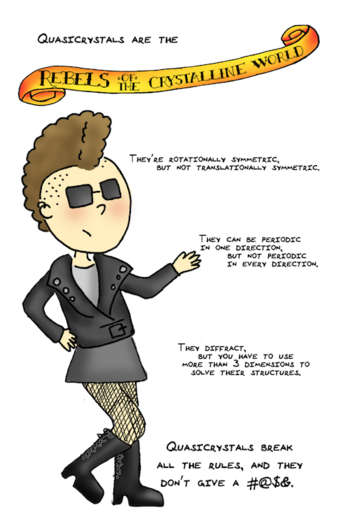No joke: Chemistry thesis transmuted into comic book

Veronica Berns, who recently completed her Ph.D. at UW–Madison, wrote and illustrated a comic book, “Atomic Size Matters,” to make the science in her chemistry thesis more accessible. (Click here to enlarge.)
Illustrations: Veronica Berns
As thesis writing approached, University of Wisconsin–Madison graduate student Veronica Berns faced a conundrum. She knew how hard it was to describe her work to friends and family — indeed, anybody outside the tight clan of structural chemists. And that was particularly true since she concentrated on a category of should-be-impossible structures called “quasicrystals.”
“My friends and family were always asking, ‘What do you do in the lab? Why are you staying there until 10 p.m.?’” Berns says. “It was hard to explain without using the words I would use to talk to my colleagues, so I started thinking about making it easier to talk to somebody who does not have the same background.”
.jpg)
Veronica Berns
Berns liked drawing and using “normal, English-language words,” and so about a year before graduation, she opted to accompany her traditional Ph.D. thesis with a comic book version.
Crystals are organized, repetitive structures built from multiple small groups of atoms that are locked into an identical structure. One of the best known is table salt, a cubic structure built of sodium and chlorine atoms.
Berns studied quasicrystals in the lab of Daniel Fredrickson, an assistant professor of chemistry. Quasicrystals show every indication of having an ordered and organized arrangement of atoms — sometimes including large crystal facets — except that they exhibit rotational symmetries that have long been considered incompatible with such crystalline organization.
Quasicrystals are so strange that their discoverer, Dan Shechtman, remarked, “There can be no such creature.”
“Quasicrystals are interesting because they break the rules of what we think crystals are,” Berns says. “Studying that kind of thing is one way to learn something new about the world.”
About a year before graduation, she began drawing with pen and ink on paper, then scanned and digitally colored the images. Berns had one ground rule for the comic treatment: “It was really important to me that I not simplify the science until it wasn’t true. I learned a lot about how to talk about my work from drawing and writing the comic book.”
As the project progressed, she gradually revealed it to friends outside of her department. Once they got past the “is that allowed?” stage, she says, “they warmed up and wondered, ‘Why doesn’t everyone do this?’”
Fredrickson is a believer in popularizing complex science. “It’s very important to me to make the science meaningful beyond the people who work in the area,” he says. “As I read the comic, it struck me how well she had made it meaningful. Through her whole Ph.D. process, she was passionate, engaged, willing to try new things. This was such a good use of her time, for getting her ideas out there.”
Berns, who grew up in Highland Park, Illinois, kept her parents, who had retired from working on financial software, in the dark until the end. “I didn’t tell them until I showed it to them at graduation; just kept it a total secret.”
After graduating in May, Berns moved to Chicago to work as a research chemist making new materials in an industrial lab.
Although it was not easy to find time to work on the drawings, “it was a treat at the end of a busy day,” she says. “At first, it was hard to wrap my head around it, to think about certain concepts in a different way, but once I got the flow, it became easier.”
Berns has started a Kickstarter page to fund printing of the book. “A lot of people say they want to read it with their kids, to get their kids interested in science,” she says. “Starting conversations with people who don’t normally talk about science is really important to me.”





